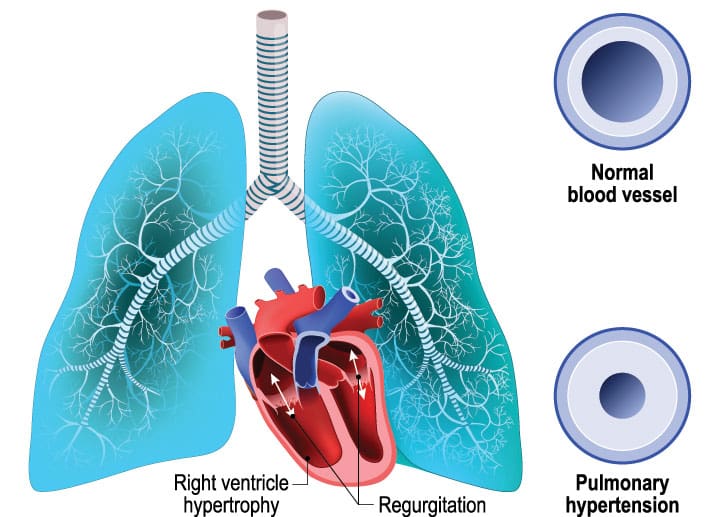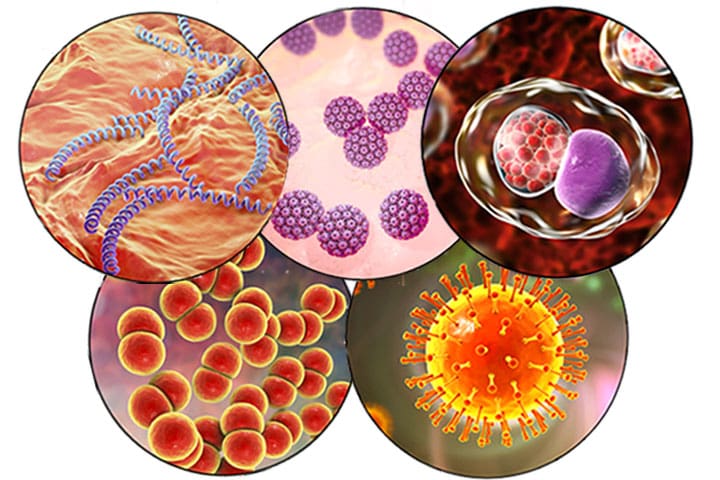Recognize potential danger for a positive outcome.
Takeaways:
- Abdominal aortic aneurysm is a serious condition that requires prompt identification and effective interventions.
- Early recognition of abdominal aortic aneurysm is key to effective management and prevention of fatal complications.
- Nurse practitioners play a critical role in identifying abdominal aortic aneurysm.
Mark Jones,* a 67-year-old white man, is seen in the emergency department (ED). He says that for the past 2 days he’s experienced nausea, vomiting, and epigastric discomfort. His vital signs are temperature 98.2°F (36.8°C), blood pressure 100/80 mmHg, heart rate 110 beats per minute, respiration rate 20 breaths/ minute, and oxygen saturation 94% on room air.
History and assessment
 Julie McDonald*, an acute care nurse practitioner, arrives to evaluate Mr. Jones. She learns that he has a history of coronary artery disease, hypertension, and hypercholesterolemia, for which he takes rosuvastatin. Mr. Jones is obese and has smoked half a pack of cigarettes a day for more than 14 years. He’s alert and oriented.
Julie McDonald*, an acute care nurse practitioner, arrives to evaluate Mr. Jones. She learns that he has a history of coronary artery disease, hypertension, and hypercholesterolemia, for which he takes rosuvastatin. Mr. Jones is obese and has smoked half a pack of cigarettes a day for more than 14 years. He’s alert and oriented.
During the physical examination, Julie finds a tender pulsatile mass and abdominal bruit upon palpation, which leads her to suspect that Mr.Jones has an abdominal aortic aneurysm (AAA). That suspicion is rein- forced by Mr. Jones’ history: He has many of the risk factors for AAA, including smoking, being white, hypertension, atherosclerosis, elevated cholesterol, and peripheral vascular disease. Julie also knows that although the most common symptoms of AAA include flank, back, and abdominal pain, Mr. Jones’ GI symptoms also can be caused by compression from an aneurysm.
Diagnosis
Julie orders laboratory tests, including a complete blood count (CBC) and a basic metabolic panel, as well as an abdominal duplex ultrasonography, which has a high specificity and sensitivity. The CBC shows microcytic hypochromic anemia (low hematocrit [33%] and low hemoglobin [9 g/dL]), and his basic metabolic panel results are normal.
An abdominal ultrasound reveals an aorta that’s 5.6 cm in diameter. Because of the size of the aneurysm, Julie realizes that Mr. Jones needs surgery to avoid possible rupture and subsequent acute bleeding. The surgeon she consults agrees and orders a computed tomography angiography (CTA) to confirm the size of the aorta, visualize retroperitoneal bleeding, and evaluate the location of the aneurysm and the renal arteries. Julie knows that a possible risk of this procedure is contrast-induced nephropathy.
The ED nurse monitors Mr. Jones’ vital signs until he’s taken to surgery.
Outcome
Mr. Jones undergoes an AAA repair with a graft that replaces the portion of the aorta that’s removed. His postoperative course is uneventful, with none of the possible complications such as colon ischemia, cardiovascular injury, impotence, distance embolism, and acute kidney injury or failure.
Mr. Jones’ nurse on the surgical unit has a nutritionist see Mr. Jones to help him identify weight-loss options. The nurse also reviews discharge medications with Mr. Jones and provides resources for smoking cessation. Julie suggests a nicotine patch, which Mr. Jones agrees to, and discusses the importance of exercise to help him lose weight.
Follow-up
AAA, the 15th leading cause of death in the United States, is a pathological dilation of the aorta that measures more than 3 cm in diameter. Pain upon palpation over the aneurysm is a sign of symptomatic AAA, but approximately 60% of AAAs are misdiagnosed. Death often occurs by exsanguination when an AAA ruptures.
If an AAA is less than 5.5 cm wide (about 2 inches), repeat screening and monitoring is recommended; surgery is recommended when an AAA is 5.5 cm or larger. Patients at poor risk for surgery may be candidates for endovascular aneurysm repair (EVAR), in which a stent is inserted into the portion of the dilated aorta to facilitate blood flow. EVAR requires lifetime CTA surveillance and sometimes reinterventions for problems, such as device occlusion, graft-related endoleak, or renal impairment.
A one-time screening by ultrasonography for AAA is recommended for men age 65 to 75 years with current, present, or past history of smoking. If Mr. Jones had been screened, his AAA might have been identified sooner.
*Names are fictitious.
Myriam Jean Cadet is a family nurse practitioner and an adjunct professor at Lehman College in Bronx, NewYork, where Ivreen Robinson is a family nurse practitioner and a full-time assistant professor.
Selected references
Anderson JL, Halperin JL, Albert NM, et al. Management of patients with peripheral artery disease (compilation of 2005 and 2011 ACCF/AHA guideline recommendations): A report of the American College of Cardiology Foundation/American Heart Association Task Force on Practice Guidelines. Circulation. 2013;127(13):1425-43.
Keisler B, Carter C. Abdominal aortic aneurysm. Am Fam Physician. 2015;91(8):538-43.
Kent KC. Clinical practice. Abdominal aortic aneurysms. N Engl J Med. 2014;371(22):2101-08.
Lee R, Jones A, Woodgate F, et al. The experience of patients during the clinical management pathway of abdominal aortic aneurysms at a NHS Trust. J Patient Exp. 2017;4(4):202-9.
Singh MJ. Abdominal aortic aneurysm. Society of Vascular Surgery.
U.S. Preventive Services Task Force. Screening for abdominal aortic aneurysm. 2014.
ant9-Rapid Response-822

















